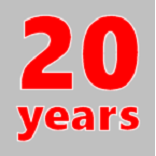Features
What makes Umana different?
Umana is a unique fully integrated system that incorporates your HR and payroll processes.
Umana’s unified design melds HR + Time-and-attendance + Payroll into a consistent seamless whole, with date-in-time logic that allows you to see your business situation in real time, analyse the past and enter future dated transactions. Umana will save you time and effort. It can simplify your processes with powerful tools that automate the tedious tasks you now do manually.
Every business is unique
Your rules and collective agreements have evolved over years. In Umana you can build your rules modify them as they change and maintain exceptions too.

The Umana guarantee: No matter how complex your rules, they can be implemented in Umana.
Your organization can grow with Umana. Quickly or step-by-step. You can start out with the base product; then add rules and tools when you are ready. We can help you convert your existing data and let you implement in phases.
Every software is unique, too. There is nothing as flexible and powerful for medium size business as Umana. Our unique architecture and design allows us to offer affordable pricing. Take a look at Umana and you see for yourself.
1. General Features

The more you work in HR and Payroll, the more you realize they are not as simple as they appear. They are full of subtleties, nuances, and exceptions. Umana is designed to handle real life complexities.
Here are some of the features our users love most:
A consistent unified system

Umana is a single complete system with shared data for HR, Time-and-attendance, and Payroll. Inconsistencies are eliminated as data is entered once.
You can control who sees and who has the ability to update what data.
Everything works together, as it should:
- You never need to enter anything twice. Enter it once and It automatically applies everywhere. For example, when HR terminates an employee, they can’t get paid by mistake.
- You learn Umana faster because the same concepts apply throughout. The same codes, the same ways of extracting and analyzing information.
- A single report or extraction or Email to a manager can pull data from the whole system. For example, the pay stub can show the different jobs performed on which days days and at the rate paid for each.
- When viewing HR data, you can drill down to payroll info, and the other way around. All the parts are connected and work together. You don’t have to think about it.
- Access and update ability is controlled module by module. Umana promotes cooperation between teams while maintaining separation of responsibility. HR can do their job and Payroll theirs, together maintaining your shared corporate data.
- Benefits can be HR-driven or payroll-driven. Time banks too.
Bilingual

Designed for the Canadian market where both English and French are official languages. With Umana you can work in English while another user works in French, and switch dynamically.
Everything available simultaneously in both languages
- All codes (Pay codes, job codes, etc.) can have an English description and a French description. Pick a code and the corresponding description is shown for the language you are working in.
- Reports and screen all have English and French versions as well. You can be working in one language and print a report in the other.
Highly Configurable & Extensible

We designed Umana to be configurable and extensible from the ground up. Whatever you need, there is always a way to do it in Umana.
Ask us!
- If the feature you need is not standard in Umana, there is a good chance we have implemented it somewhere. Just ask us; we can do it for you too!
There are best practices, labour standards, and YOUR practices. If it is in your collective agreement you don’t have a choice. No matter what, Umana can do it your way.
Umana adapts to YOUR needs – not the other way around.
- Use your own codes everywhere: pay codes, movement codes, job codes, schedules, and so on. And everywhere you can extend Umana with custom fields and custom tables.
- Create your own codes. Add custom tables. Add custom fields with their own help and validation.
- Add custom rules, custom alarms and custom calculations and formulas.
- Add custom reports, imports and exports. Assign the selection, help and security that is standard in Umana.
The Umana Extensibility Framework protects your system from obsolescence.
- The Extensibility Framework isolates your customizations from the vanilla Umana. Customization doesn’t lock you into old versions.
- You can install new versions of Umana, and take advantage of their new features without losing your investment.
Your Rules and your Exceptions

In HR every rule has an exception. Umana handles both your rules and your exceptions.
Umana lets you set up your rules, and then override them when nessecary. Here are some examples.
- Set up remuneration rules and rate, yet track red-circle (exception) employees
- Set up benefit rates, but override them for specific individuals
- Set up bank entitlement rules, but Joe negotiated an exception
- Define reporting rules, with exceptions for specific people and modules
- Define a schedule’s repeating pattern, override it for Wednesday and Thursday for a specific employee and changes it again in the summer.
Date-in-time

Umana tracks the work life of every employee with full detail and history.
Like a Facebook time-line but with much more detail.
- Dated Employment history with all changes.
- Detailed day-by-day (or hour-by-hour) hours worked, job performed, project (optional), pay rate, location worked, etc.
- You can report on employees as of a specific date, their status, their manager, where they worked, etc.
- Umana keeps benefit history by employee, including options and premiums. You can even keep rule and formula history.
- Tax formulas and brackets are also available for past years. You can even be working on two different years simultaneously for different employees and Umana uses the right formulas for the right dates.
- Track bank entitlement and absences for years back
We can load your existing data into Umana as far back as you want.
Easy integration with other systems
![]()
Umana works well with your other systems, from accounting to scheduling to your in-house applications.
Your employees are key to your business. So, employee data is too.
- Umana data case be easily shared with you other systems
- You can import from timeclock, from schedules, from other systems
- With imports, export, and web-services Umana becomes part of the family of key applications
- Export to your GL, to your invoicing, to government agencies
- Send files to your insurance carrier, Centraide, etc.
Automation, Alarms, Counters, Watches

Tracking coming events (probation periods, automatic grade advances, reviews, etc.) and planning (vacation and maternity leave) is key to managing HR. Umana has all the tools to make it easy.
Umana automation lets you automate the processes you want to
- You can trigger them automatically or manually.
- Processes can typically be run in “simulation” mode to review calculations without updating the data base
Alarms let you specify “When this happens, do the following”
- Umana comes with many sample alarms to you can copy or modify and activate
- You can trigger an alarm on an employee-specific date, or when an employee reaches a specific number of hours. You can combine both hours-worked and elapsed time conditions for the same employee.
- The alarm action can be basically anything: Updating data, importing or exporting, sending emails. Sending an alarm to managers when one of their employees nears the end of their probation period.
- Alarms can be triggered on daily, weekly, or on any cycle you want.
Counters let you select pay codes and count hours worked
- Alarms and other actions which trigger after a certain number of hours use a counter
- Time banks and benefits like pension plans use a counter to select transactions.
“Put a watch” on important dates or hours-worked thresholds.
- For example, you can view employees approaching the end of probation, or the end of a waiting period to enroll in certain benefits, or upcoming anniversary dates.
- You can define the fields you want to put a watch on and for which employee categories. Lots of examples are provided.
Powerful reporting & data extraction

Umana lets you extract and combine data from all parts of the system. Print it, export it, analyse it, email it.
Umana has over 300 built-in reports
- Each report has selection criteria so you can print the selection you choose.
- Save the reports with your pre-set selection to make new reports. For example, from an EMPLOYEE LIST you can create a TEMP EMPLOYEE LIST and save it.
- Run them as often as you want at no cost.
Any report can be printed to PDF or to exported to Excel
- You can email them directly from Umana
- Many reports can be mass-mailed to employees or managers
The built-in reporting engine lets you build your own reports inside Umana. You don’t need a third-party tool.
- Even advanced features such as groupings, totals, and graphs can be included
Import and Export options let you connect with Excel or other in-house systems
- Automatically create pivot tables from your data within Umana
Tools & wizards

Umana is replete with tools in every module: Easy-to-use wizards to step you through mass changes, payroll calculations or the creation of a record of employee. Even create a retroactive pay.
Attach Documents

Umana lets you attach documents to employee records with a simple drag-and-drop.
Just drag and drop a document onto the Umana record
- Only employees with access to the record have access to the document.
Email and Calendar integration

Umana can send Email reminders and calendar invitations to employees, managers, and administration staff.
Umana empowers your managers and your employees.
- Email keeps your them informed and reminds them of things they have to do.
- Email calendar invitations makes it easy simple for them
2. First Class Service & Support

Our priority is making our customers happy. We know our customers personally and they know us.
We work with you from the start and never stop. Developing HR and payroll software is our speciality. We understand the business.
Personalised service and Expertise

Our team members are all trained in Human Resources and Payroll best practices and are members of the Canadian Payroll Association.
The team that works with you during the implementation process will be with you for support on an on-going basis. When you contact us for anything you will reach live team members that know your business and work with a sense of urgency for even the smallest issue.
Analysis & Training. Available on site

The first steps involve working with you to understand your business and train you on Umana.
We start with a quick tour of the software. Then together we look at your most pressing needs and how Umana can help. We show you how to get the most out of Umana.
- [We like the personalized approach we enjoy working on-site with you. You get to know us and we learn about you and your team.]
- [What are your rules and exceptions? What areas cost your business money what can we do to streamline them? What can be automated and what can’t? How can Umana simplify your process?]
Getting Started: Configuration, Customization, Conversion

To get started, we train you on Umana and show you how to configure it. We help, letting you do as much as you want or can. When customization is required we are there with you as well.
- Loading your existing data into Umana puts all your employee information in one single place. If you can get the data out of your existing system, we can do this for you. (No one else does this, by the way.)
Support never ends

Keeping you up to date with new government requirements and new features is an ongoing task. We can train your new staff and help you when your collective agreements change. Carver Technologies staff has been supporting Umana for over 20 years, and we plan to do so for the next 20 years. You are never alone; we are always there to help.
3. Modules & Functionality
What does Umana do? Let’s try to answer your questions.
Below is a brief summary of Umana functionality.
Employees and Positions

Employee information is the foundation of HR. Umana tracks employee information and history in complete detail, from hire to raises and promotions to rehire to retirement or termination.
Nothing goes unrecorded. Everything can be tracked and updated: past, present, and future. The result is an accurate history of every employee which is easy to view and to work with.
Employee status history
History, Details, and Nuances
- Mid-week changes
- Multiple changes the same day. Define your own codes
- Employees with multiple jobs (wearing different “hats”)
- Different pay when doing different jobs
- Secondments (temporary assignments)
- Ability to correct history
- Ability to enter future changes and anticipated end dates
Jobs
Umana lets you build your own job table.
A “job” is role or title: mechanic, driver, director, etc. You will typically have many employees holding the same job.
- You can link jobs to the table National Occupation Codes.
- You can specify competencies required for a job. (You can start by assuming all employees with that job have those competencies, or you can use them as target competencies and plan for training.)
- You can associate a job with specific locations, unions, grades and pay scale, etc.
- You can group jobs into categories for simplified selection.
- When you assign an employee to a job, you can override the title. For example, if the job is Vice President you can make the employee V. P. Finance
Positions
Position tracking is also available in Umana. It is optional
In contrast to a job, a “position” is a specific chair typically occupied by a single person. E.g. Vice president of Finance.
- In Umana, use of positions is optional. You can use positions for all, some, or none of your jobs.
- If you are not currently using positions (as opposed to jobs), we suggest you start without positions and add them later.
- Positions are useful for budgeting and head-count tracking. Umana can also track vacant positions. There are reports and analysis tools for this.
- When an employee holds a position, they can be incumbent (owner) or a replacement. A position can be filled be a replacement while the incumbent is absent.
- You can view changes in positions, and view who held the position historically.
- Positions can also have additional competency requirements
- A position can be shared by two part-time employees. A position can be over-filled to allow a transaction period between employees.
Hats, Secondment
In real life some employees wear multiple hats – acting in multiple roles is part of their responsibility.
Umana lets you specify the multiple hats that an employee wears.
- What you include in a “hat” is up to you: Job, Grade, Location, Supervisor, etc.
- You can also simply specify job competencies for an employee: the jobs he can be assigned to.
An employee in “secondment” is holding another job temporarily
An employee in secondment has a temporary assignment as well as a base permanent job from which they are absent
- You can base benefits on their permanent job or the temporary assignment
- You can report on employees’ permanent status or temporary assignment
- If you use positions, the employee holds his base position as incumbent absent as a replacement in the temporary position
- Secondments are typically used to fill temporary absences, and for employees trying out for a new job.
Org structure, Reporting relationships
Your organization hierarchy – companies, divisions, departments, etc. – will be an important part of the Umana structure.
You can have a single or multi-level structure, your choice
- This typically follows your accounting structure. You can use different terms for the different levels.
- Each employee is assigned a “home” department. You can use this for selecting employees for reports or rules throughout Umana.
- When an employee works hours in a different department, Umana can charge the department for the employee’s time (and employer overhead pro-rata).
- If you need two different structures, Umana offers that as well.
Reporting relationships can be complex. An employee might report to one manager, but work under a “coordinator” or “supervisor” assigned by the manager.
Umana offers tools to help you track all of these variations.
- Each employee has a primary manager. The manager has the final word.
- An employee may have different managers for use in different modules. For example, timesheet approval and evaluations may be done by different people.
- “Sub-managers” (“coordinators” or “foremen” or “supervisors”) can be assigned by managers for selected employees, with overlapping allowed.
- You can specify the manager for each employee, or you can go to the manager and indicate the department they manage; by default, all employees in the department will report to that manager.
- If you are using positions, you can specify that one position (A) reports to another position (B). By default, that means that the employee holding position (A) reports to the employee holding position (B).And of course you can override.
Remuneration, Red-circle employees, Premiums
Umana lets you build your company pay scales by date and by any other element
The options are limitless
- You can organize rates by collective agreement, by job class or category, by job, and by grade, etc.
- Each rate in the table can be a fixed amount, or a range (minimum / maximum)
In Umana, the employee’s pay rate is kept with their employment history.
It typically changes when the employee changes job, gets a raise, or gets a cost-of-living increase
- Remuneration can be specified as annual amount, a per-pay amount, or an hourly rate.
- Employees who wear multiple hats may have a different rate for each job.
Our wizard applies corporate pay scales to employees as of the cost-of-living increase date
Do it individually or as a mass change
- For employees with a pay range, you can give them a specific percent increase, or have Umana maintain the same compa-ratio as they had before.
- Of course, you can manually override employees at any time. If you mark an employee as “red circle” then they will not be affected by the wizard.
An employee working in a different job or location can get paid at a different rate
Umana offers the flexibility to apply whatever rules you have
- Umana calculates the pay rate for the hours worked in the other job according to your rules.
- Rules might vary by collective agreement or job category.
- Different rules can apply to different pay codes
Premiums can be applied automatically
- Weekly or hourly premiums. Shift premiums. Added-responsibility premiums. Premiums attached to the job.
- Some premiums might be entered manually; other added automatically.
- Each premium will have its own rate calculation, based on whatever you choose.
Seniority
Umana offers a number of ways of calculating employee seniority
Seniority calculations many vary by employee status or category or union
- Seniority can be date-based or hours based.
- With date-based seniority, it can exclude certain periods of absence
- Hours-base seniority is counter based, and can include whatever pay code you select
- It is possible for an employee to have multiple seniorities for different jobs, or job groups, or unions, with customization.
Seniority and seniority rank can be used in many ways
- It can affect priority for absence requests
- It can automatic create pay increases and grade advances
- It can affect probation periods
Payroll

Payroll is about rules, precision, control, and detail.
These qualities are what set Umana payroll apart. Umana is able to do payroll more efficiently because it connects directly to the HR remuneration module.
Umana payroll applies remuneration rules to each hour each day separately
- When an employee changes rate or status mid-period, Umana handles each day correctly
- When an employee works in a different job or location or department, Umana applies your rules to determine the rate they are paid.
- Overtime can be added automatically based on daily or weekly rules. Overtime can be banked based on employee choices and your rules
- Premiums can be added manually or automatically based on rules
Full detail by day, hour, job
Umana tracks employee hours worked, absences, premiums, etc. in detail – day-by-day, by job performed, by department and location, and even by project or PO.
Umana distinguishes “when worked” from “when paid”, so corrections and adjustments are easy to make and trace.
“Attendance detail” shows each hour worked or absent, when worked, where worked, job performed, the rate, and when it was paid.
- More precise data. Easy to balance; easy to correct
- Mid-period changes handled automatically
- View in calendar format. See patterns.
- Ability to charge GL accurately. Pro-rate employer overhead based on where employee worked.
- Hours can be loaded from a timeclock or another system, generated automatically, posted directly from a timesheet, or entered manually.
- Flag transactions for follow-up
Net pay calculation
With Umana you can recalculate the deductions and net for an employee – as often as you like.
Make changes and view results immediately
- Adjust on the screen and do it again, as often as you want. No extra cost
- Manually adjust earnings, benefits, or even statutory deductions
Drill-down
“Drilling down” means clicking on an item to see where it came from. It makes your payroll auditable and easy to balance.
Start anywhere and work your way around. All parts of Umana work together.
- Click on a total and view the detail
- Click on a benefit and see the enrollment and plan (rules). Or the other way ‘round: start with a benefit and see all the contributions
- Click on a time bank and see the all the deposits and withdrawals, and when they were paid
Connect easily to other systems
Umana connects easily to your other systems to eliminate duplicate data entry and insure accuracy.
Import hours from your punch clock or timesheet
- Use a Umana-provided punch clock or your own
- View punches within minutes
- Allow managers to view, edit, approve
Import schedules from your scheduling system
- Use Umana’s scheduling tools or import from your existing systems
Export to your GL with Umana’s powerful interface
- Control what pay codes go to what account
- Use different accounts for different departments, location, or jobs performed
- Distribute employer overhead based on where employee worked that period
- Track bank entitlement. Track benefit arrears
- View where each debit/credit comes from and what each pay code
Web services available
Always up-to-date
Your support contract insures Umana is always up to date with the latest government requirements and forms, tax calculation formulas, file formats, and so on.
Built-in to Umana
- All tax calculations, updated annually and mid-year as needed
- ROE (Record of Employment)
- XML files for T4, T4A, T5, etc. and the Quebec version RL1, RL2, etc.
- Payroll tax remittance calculations
- Workplace safety boards, etc.
Updated automatically. No formulas to enter
- We deliver a new (dated) calculation module each year. Umana automatically selects the proper year for the payroll period you are working on.
- New file formats etc. are provided for you.
In addition to transmitting to government agencies, Umana handles transmission to your bank (for direct deposit) and some benefit carriers.
Retro pay
A retroactive pay is always complex. Umana makes it easier.
The Umana “retro pay wizard” compares new rates to old, and calculates the difference, and creates payment for the difference
- You have full control over all steps of the process
- Use it for a single person, or for everyone after a collective agreement is signed.
- Lets you create transactions historically so your ROE records are correct
- You can run a special pay to simplify tax calculations
Electronic pay stubs
In Umana, pay stubs can be customized like any other report. You can show or hide what you want.
You can distribute to employees in different ways. And use different approaches (or multiple approaches) for different employees
Here are some ways:
- On paper, the old fashioned way.
- Via employee self-service: the employee logs on to Umana and views or prints their pay stub
- Via email. You can Email pay stubs in PDF format to employees
- At the Umana payroll portal. You upload pay stubs to the portal where employees can view or print them from home.
- You can let employees choose what they want to do.
Time & Attendance
Tracking time worked and absent has many sides to it, from time capture, to approvals, banks, and planning. The end result is paying employees correctly and workforce planning.
- Because Umana is fully integrated, information flows quickly and easily from start to finish. The result is clean and accurate information from start to finish
- Because all information is accessible everywhere, the time sheets and managers can check bank balances and view transactions and flag them for review.
Time capture
Umana can accept data from any source, such as:
- Time clocks and biometric devices
- On-screen, phone or tablet application
- Time sheets
- Another application
Time clocks
We can have time clocks installed for you, or Umana can acquire clock in-out information from units you already have.
- Biometric devices are fine, too
- Punches arrive in Umana within minutes.
- Location, job performed, and project can be captured if available.
Imagine a TV screen in your department showing who is in, who is not, who called in sick, who is on vacation, etc.
On-screen, phone or tablet application
For employees with a computer, you can give them an on-screen timeclock as part of Umana.
- Click IN in when you come in, OUT when you leave. Simple.
Umana can also connect to phone or tablet applications such as TSheets.
Time Sheet
The Umana timesheet lets employees enter the hours on a weekly or biweekly basis: Time they worked or were absent, what they did, where and why.
When finished, the employee signs their timesheet. Overtime is added and banks are checked. The employee has immediate feedback.
- Hours can be preloaded from the employee schedule
- Location, job performed, and project or work-order can be entered
- Expenses can be entered.
- The employee can view their schedule and banks
- Hours can be rounded to the schedule and rules can be applied
Starting with a standard model, Umana timesheets are personalized to the customer’s needs.
- Fields, rules, and drill-down options are configured to your needs.
From another application
- If you have specialized in-house applications, Umana can receive employee hours from them. Hours and other information can be acquired via file transfer or web service.
- Example: Work-order maintenance system.
- Example: A bus company imports information from their driver management software
- Example: In cities, firemen’s hours often come from a specialized system for firemen.
- Umana can export information to other systems as well.
Umana fits into your environment like a member of the team.
Approvals
Hours from a punch or time-clock are reviewed and approved by the manager.
- The approval process transfers the time to the payroll (attendance detail).
- The manager can refuse an employee’s and send back for correction, or the manager can correct it himself.
- The manager can assign time to projects for billing or pay codes for special activities
Managers can assign assistants to help them, and can delegate approval responsibility for when they are absent.
Rule-based rounding, OT, Premiums, etc.
Company rules are applied when the timesheet is signed or approved
- Different rules can apply to different employee groups.
- Rules can be applied based on schedule and planned overrides. Rounding rules can depend on the schedule. Flex-time rules can be applied
- Exceptions can be handled for specific employees
- Overtime rules can be by day, by week, by period with special rules for holidays, etc.
- Premiums can be added by employee, by job, shift, location, etc.
Hourly rates and premium rates are added when approved
- Rates can vary by date, job performed, location, etc.
- They can come from the employee’s file, from your rate table and from the job performed, etc.
Leave planning
The Leave Planner module in Umana lets you plan vacations and other kinds of leave, with an approval process by the manager.
- For more information Planning and Scheduling
Umana also handles sabbatical leave
- First the employee banks a part of their pay for a period of time. When they take their leave, the hours or dollars come from the bank.
- Also known as a Deferred Salary Leave Program (DSLP)
Benefits & Banks

Benefits and time banks are ultra-flexible in Umana. You can have as many as you need with whatever rules you need.
Define your benefits
- Benefits have calculations for premiums, employee/er share, etc.
- Specify which benefits (or parts thereof) are taxable federally, provincially, insurable, etc.
- Specify eligibility, waiting periods, options available (single, family, etc.) , arrears policy, exoneration
- Enroll and update employees automatically
Define your time banks
- Multiple banks plus multiple plans for each. Both in time and dollars
- Specify eligibility, reference years
- Specify entitlement rules, carry-over rules, minimums and maximums, cash-out rules.
- Enroll employees automatically
Simply enroll employees in the plans they are eligible for. Enrollment can be automatic or manual. For each employee Umana tracks the banks and benefits enrolled in, now and historically.
Are your benefits and banks HR-driven or Payroll-driven? Umana offers both possibilities, and you can mix-and-match by plan.
- An HR-driven benefit might be life-insurance. Premiums change when an employee gets a raise, but are normally the same every pay.
- Union-dues are often payroll-driven benefits. They are often a percentage of earnings which might include overtime.
- Bank entitlement can be deposited yearly, monthly, or each pay.
Full history and drill-down
For every benefit Umana tracks when the employee was enrolled, the options selected, and the premiums paid – with detailed history.
For every bank Umana tracks employee deposits, withdrawals, and carry-over year-by-year historically.
Drill-down examples
- Click on a benefit plan or bank plan to see who is enrolled
- Click on the benefit enrollment to see a period-by-period the employee and employer contributions
- Click on an employee’s bank to see all the absences and withdrawals. Click on one and open the transaction detail.
Flexible options, rates, entitlement, and rules
Benefit premiums calculations can use standard rules (with your parameters) or you can write your own
Benefit premiums
- Configurable employee-selected options and factors
- Premium calculations can be based on sex, salary, job, status, option selected, age, etc. Dated premium rates and rules
- Payroll-driven premiums available, based on employee earning during the period
- Automatic updates when employee status or age changes
- Connect dependents to plans
- Can override for specific employees (like a red-circle benefit).
- Mid-week changes can be charged from the start of the week, the end of the week, or pro-rata. (One of the niceties of having HR and payroll in the same system.)
Time bank entitlement can be deposited when you like
Time bank entitlement and rates
- Entitlement by seniority bracket. User defined seniority dates. Can use current seniority or end-of-year seniority.
- Separate entitlement calculations for dollars and hours (or days).
- Entitlement can be deposited at start of reference year, each month, each pay, first pay of the month, upon hire.
- Entitlement can be accrued to be taken next year only.
- You can specify the rate when taken as absence or cashed out (may be different)
- Can be set to labor standards or your own standards (or the larger)
- Can specify maximum and minimum for carrying over to new year, balance, total deposits during the year.
- Override on an individual basis when needed
Umana offers a panoply of reports and tools to view and balance banks and benefits, and to remit to suppliers, partners, and governments.
Arrears, Exoneration
If an employee does not have enough earnings to pay their share of benefits, Umana can accumulate arrears : a debt owing for that period for the employee.
Employee arrears
- Can be paid back, little by little, when the employee returns to work.
- You can track arrears for some benefits but not others.
- An employee on long-term-absence may want to keep some benefits (and pay them) but put other benefits on hold.
- The employee can bring a cheque to pay for the benefits to be retained.
- In the G/L, arrears become a debt due, reduced when paid back.
- You can remit to the carrier the employee share immediately (and assume the debt), or wait until the employee catches up to remit their share.
Exoneration
- In certain cases (which you control), the employee share can be waived during an absence. Or possibly the opposite: the employee might be required to cover the employer share.
Waiting periods on hire
Health insurance waiting periods on hire vary, but are always a nuisance to track because few systems have tools to handle them automatically. Umana does have tools, and good ones.
Waiting period management
- Umana lets you specify waiting periods in days, months, or hours worked, or a combination thereof (whichever comes first, last, etc.). Hours worked are based on a counter so you can control which pay codes are counted. Different rules can apply to different groups.
- Don’t worry about enrolling employees. Umana can do it automatically if you want. (With manual override possible, of course.)
- You view and be reminded of employees approaching the end of their waiting period.
Reporting
Benefit reports are available to view enrollments, premiums due and paid, arrears, remittances due, changes to advise your carrier of, and so forth
Built-in reporting

The beauty of an integrated system is that you can get accurate, consistent, interrelated information from all parts at once.
And Umana has tons of pre-build reports and tools to do it easily.
Reporting, importing, and exporting is built-in to Umana. You don’t need another tool and you don’t need to go outside Umana.
Over 300 built-in reports
Umana has over 300 built-in reports, plus numerous imports and exports. There are reports in every module for every need
Filter and sort each report
- Selection options let you report for a different date, or for a selection of employees or departments.
- Run the report as often as you want.
- Copy and Save as a new report with a custom name, filter, and sort.
Export to Excel. Pivot tables, Graphics
All reports can be exported viewed on the right inside Umana, or printed, or exported to Excel or PDF or HTML
Excel integration
- Export any report to Excel. Format it like the original report, or in a raw format made for Excel data manipulation
- Create custom exports to for Excel or CSV format. Create Excel pivot tables automatically with the selected columns
- Add graphs to Excel
Create as PDF
- Every report can be printed to a PDF. You don’t need a “phantom PDF printer”; Umana does it directly
Mail them
- You can run one or more reports and attach them to an Email which you can mail from Umana
- You can mass mail a report to employees directly, or you can group employees by their and send to their managers
Customize them
You can take any Umana report and make it your own. The Umana report designer gives you the power and flexibility you need.
Copy, tweak, filter, sort, modify any report
- Save it with a new name.
- Make it private, public, or available to specific user groups
- Add fields, remove fields. Even custom fields are available because it uses the Umana built-in data dictionary. Access any table, even custom ones.
- Change the selection or sort.
- Add breaks, groupings, totals. Even graphs
Secure them
You can make reports private so only you (the creator) can see them. Or you can make then available to selected user groups.
Report security
- Any user (logon-id) or group can be restricted as to what employees they can access. For example, a user can be restricted to employees in his home department.
- Report data is automatically filtered down to the employees the user can view.
- Reports are organized by module, so a user’s access to each module also affects the reports he can see.
Competencies, Training, Managing human capital

Managing human capital means insuring the availability of competent, trained, motivated staff to do the work needed. It involves hiring, training and motivating employees, and planning for the future.
Competencies, Certifications

The first step is analysis and tracking. Start by defining your competencies, who has them, and where they are required. Umana has the tools you need.
Define your competencies and where they are needed
- Define your competencies and categories. You can also include language skills.
- Specify who has which competencies and at what level. The answer can be just yes/no (has it or does not), or a scale (beginner, expert, etc.) which you can define.
- Specify the competencies required for a job or a position. They answer can be yes/no (required or not), or a scale (critical, nice-to-have, etc.) which you can define.
- You can also specify competencies you want an employee to have (targeted competencies), maybe for future plans for them.
- Competences can expire (certification, permit, licence). You can track individual expiry dates and report on those coming up for renewal; or email reminders to employees or managers.
- When you know who has what competencies, and what jobs require which ones, Umana provides you a “skills gap” analysis. This is a great starting point for planning your training.
Training
![]()
Employee training is key to having and keeping competent staff. Umana provides the tools for planning, scheduling, tracking, and costing your training.
Planning your training
- Specify what training (courses) you will offer in-house and externally. You enter possible suppliers and trainers, locations, equipment needed, and costing.
- Tie your training courses to competencies required.
- For internal training you can specify groups with specific suppliers or trainers, dates and times. You can specify a maximum number of trainees per group.
- You may want to let employees request some training sessions. In other cases you may want to let managers do that.
Scheduling your training
- You can schedule employees (students) in specific groups. Or maybe let the employee or manager choose the group.
- You can invite employees via Email and provide a list for the trainer.
Track who took what
- Just because it was scheduled doesn’t mean the employee took the course. You can track that more precisely and even assign a grade to each employee.
- Umana can also record external training taken for an employee. Together they give you a complete training history for employees.
- After a training, Umana can automatically add new competencies to an employee’s file. Or alternatively base it on a pass/fail result.
Costing it out
- Umana lets you specify variable costs (per student) and fixed costs for training groups. You can also add individual costs which might vary from one attendee to another.
- You can pro-rate costs by department based on the mix of the attendee’s departments.
- Umana can include employee salary costs based on the employee’s hourly rate.
- Umana can produce the training reports required by the Quebec government (SQDM). (All Umana reports are available in both English and French.)
Evaluations
Umana can schedule and record performance reviews for employees, and send out reminders to managers.
- Reviews can be scheduled based on calendar day or months, or hours worked since the last review, or a combination of both
- It can track them, record results, and attach documents to reviews
- Reviews might add new competencies or training required to employee records.
Planning and Scheduling

Scheduling is about planning the future (what should happen), as opposed to time-capture which tracks the past (what did happen).
Umana records employee and stock schedules that users can view and print and the timesheet can use to apply rules.
- Schedules can be assigned, entered, or imported.
- Custom tools can be integrated to help you organize and optimize schedules for your particular business.
A schedule is made up of multiple layers: Patterns and Holidays, Overrides, Events, Status.
Repeating Patterns and Holidays
- The base schedule is simply the weekly pattern, though it could be for a longer period.
- First you build stock schedules: day shift, swing shift, security day-shift, etc.
- Then you assign employees to them. An employee who doesn’t fit a stock schedule can be given an individual one.
- A schedule can have a shift, a lunch break, the number of hours paid, flex-time limits, premiums, and even specific assignments (tasks, jobs, etc.)
- You can build one or more holiday calendars and attach them to the different schedules
Overrides
- Overrides are ad-hoc single-day changes and assignments for specific employees.
- Some employees might not have a base schedule at all. They might have a different schedule each week.
Events
- Events are typically absences, training and other kinds of leave planned in advance.
- The Umana leave planner is great for managing these.
Status changes
- The employee’s status is part of his “dossier” (see employment history, above). The fact that an employee is on long term absence effectively overrides their schedule.
Leave Planner

The Umana leave planner lets employees request absences and managers approve them.
- The employee can check their time banks balances and plan how to use time off
- The employee sees which requests are pending, approved, or denied. Leave may be denied automatically if there is no time left in the employee’s bank.
- When the employee makes a request, an Email is sent advising their manager
The manager can view requests by week, job, shift, and employee seniority, so the manager can approve leave in accordance with union rules, corporate policy, and manpower requirements.
- The manager can wait till a deadline date to approve by seniority, or approve leave on a first-come first-serve basis.
- A manager can assign assistants (coordinators) to help in the process.
- When the request in approved or denied, the employee receives an Email to inform them. The manager can add a note to be included, and other notes which are private to the manager.
- Approved leave appears on employee schedules and can automatically be added into the timesheet.
Employee & Manager Self-Service

Self-service means letting employees and managers use Umana themselves. Any functionality in Umana can be opened up to self-service.
Managers will have different access from other employees. Umana can be configured as far as what they can view or change for themselves, and for their employees.
Functionality you might want to open up to self-service
- Viewing pay stubs and T4s
- Viewing employee dossiers
- Viewing and changing or overriding schedules
- Entering address changes or emergency contacts
- Entering and approving time (time-sheets)
- Requesting and approving leave
- Viewing benefits and time banks
- Requesting or scheduling training
- Employee evaluations
- (Invent your own)
Payroll portal
Umana offers a web site where you can upload paystubs for employees to view or print anywhere and at any time.
Events
![]()
The Events module in Umana lets you handle all kinds of employee events, from awards to accidents and many more.
Since the training module, the accidents modules, and the leave planner are built on events, you just have to look in one place to view them all.
Events created by specialized modules
- TRAINing sessions, given internally or taken externally are events.
- ABSences planned are events and managed by the leave planner. They can also be imported from Excel or another system you.
- ACCIDents recorded in detail in the Umana accident tracking module, and appear as events
Umana comes with many built-in event types that you can use as is or customize, or add your own. This gives you unlimited flexibility for your own business needs. Be creative.
Other events you might want to use
- Evaluations and reviews
- Certificates, licenses, permits
- Grievances
- Sabbatical leave (Deferred Salary Leave)
- Disciplinary actions
- Equipment on loan to employee
Security

Umana give you complete control regarding user access. You control exactly what each user can see and can update.
Modules, reports, employees
Each module, sensitive data, and each report/import/export can be controlled individually.
In addition, you can control which users have access to which employees.
Examples of what you might want to do
- All employees can update their own address
- Managers can view their employees but not update them
- Regular payroll staff can calculate (and recalculate pay) until finalized
- Only the payroll administrators can send it to the bank
Role based
Umana role-based security help you standardize access and make changes easily.
- Just add a user to the role-groups you create to give them access.
- Add employee filters to role-groups or individual profiles for finer control
- Managers can themselves specify their replacements and coordinators
Single-sign
Umana’s single-sign option lets users avoid re-entering their password for Umana, and Windows integration lets them use their Window credentials in Umana.
- Both these options are controlled by the Umana administrator
Session control, change control
Umana keeps a history of all User logons and know who is logged on at any time. The administrator can force them out and shut down Umana for maintenance. Umana tracks who made the last change to each record and when.

